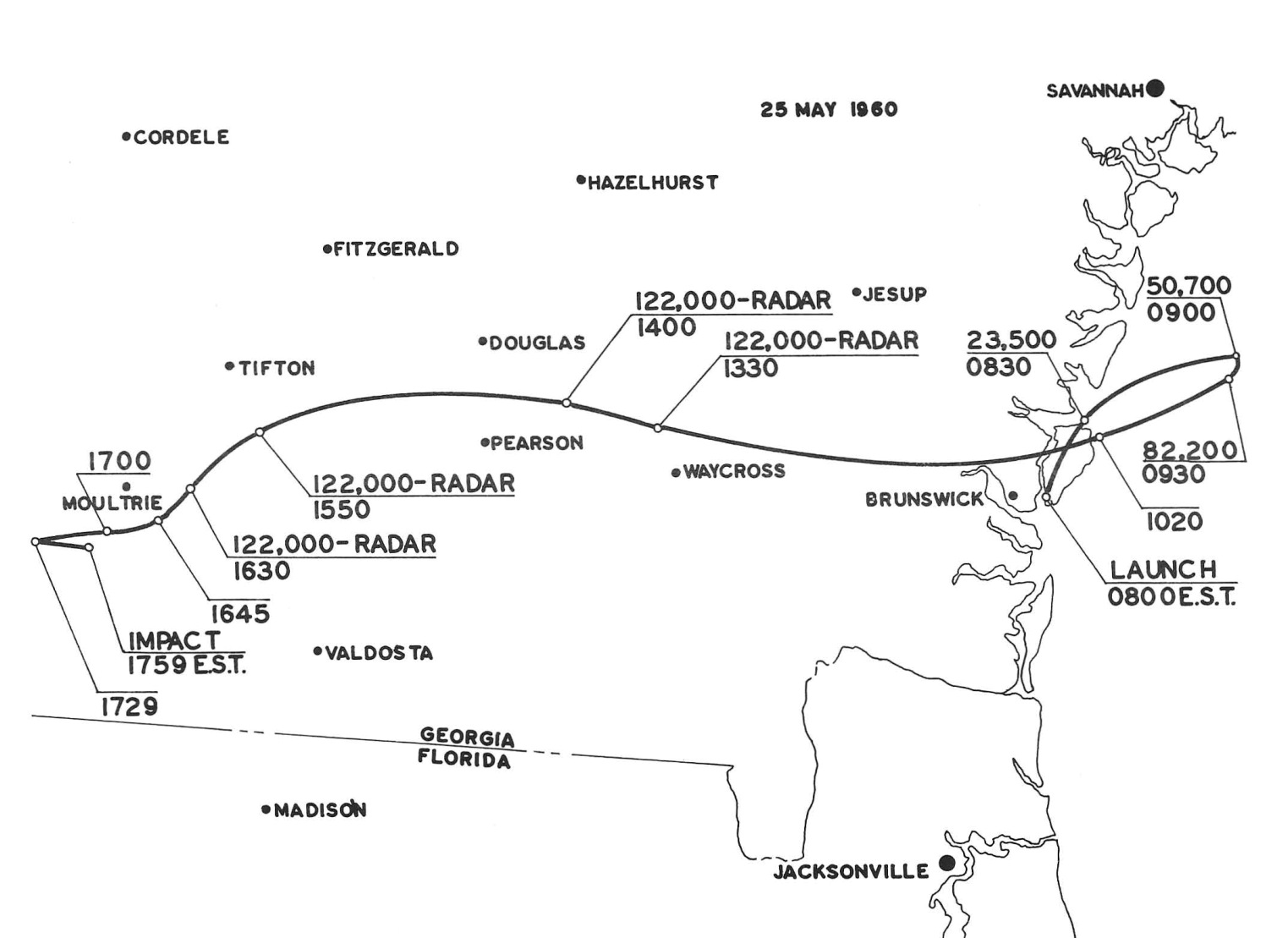Purpose of the flight and payload description
The objective of the flight was to expose for several hours above 120.000 feet in the stratosphere an emulsion stack to measure the flux of primary cosmic-ray heavy nuclei. The balloon mission was planned to be carried out approximately 2 years after the solar maximum and well within the period of minimum cosmic ray activity.
The emulsion stack flown in this experiment consisted of 14 type-G.5 Ilford stripped emulsions measuring 8 by 8 inches, 400 microns thick, alternated with 13 type-C.2 emulsions, 200 microns thick. The plane of the emulsions was maintained vertical in a masonite and cardboard container with wall thickness of 0.38 g/cm.
Details of the balloon flight

Balloon launched on: 5/25/1960
Launch site: Naval Air Station Glynco, Georgia, US
Balloon launched by: Winzen Research Inc. (WRI)
Balloon manufacturer/size/composition: Zero Pressure Balloon Winzen (120 ft.Dia.)
Balloon serial number: 120-100-V-58
Flight identification number: WRI 869
End of flight (L for landing time, W for last contact, otherwise termination time): 5/25/1960 at 17:59 est (L)
Balloon flight duration (F: time at float only, otherwise total flight time in d:days / h:hours or m:minutes - ): 10 h
Landing site: SW of Moultrie, Georgia, US
The balloon was launched from Glynco Naval Air Base, near Brunswick, Georgia, on May 25, 1960 at 8:00 est. After release the balloon took 2 hours to reach float altitude of about 122.000 feet. The flight moved close to the coast of Georgia during 7 hours 30 minutes before being terminated at 17:31 est. Impact ocurred at 17:59 SW of Moultrie, Georgia.
External references
- Cosmic-ray heavy nuclei at geomagnetic latitude 42° north J. Geophys. Res., 71(9), 2389
- Flight Summary Log Winzen Research Inc. report (1963)
3119If you consider this website interesting or useful, you can help me to keep it up and running with a small donation to cover the operational costs. Just the equivalent of the price of a cup of coffee helps a lot.

